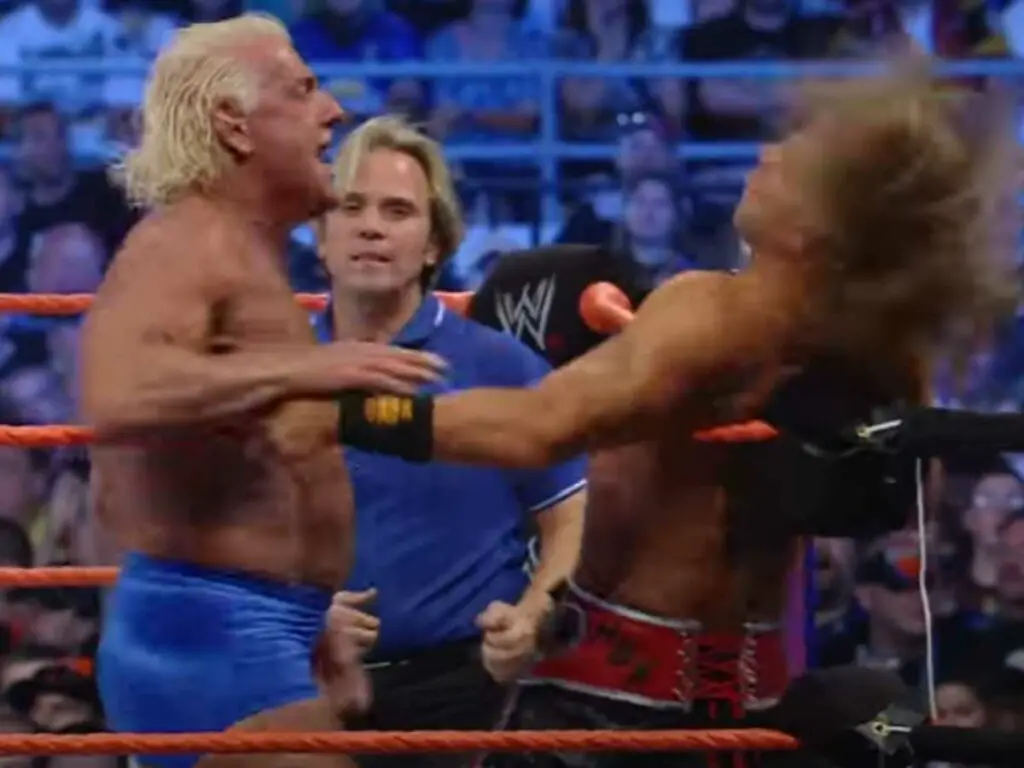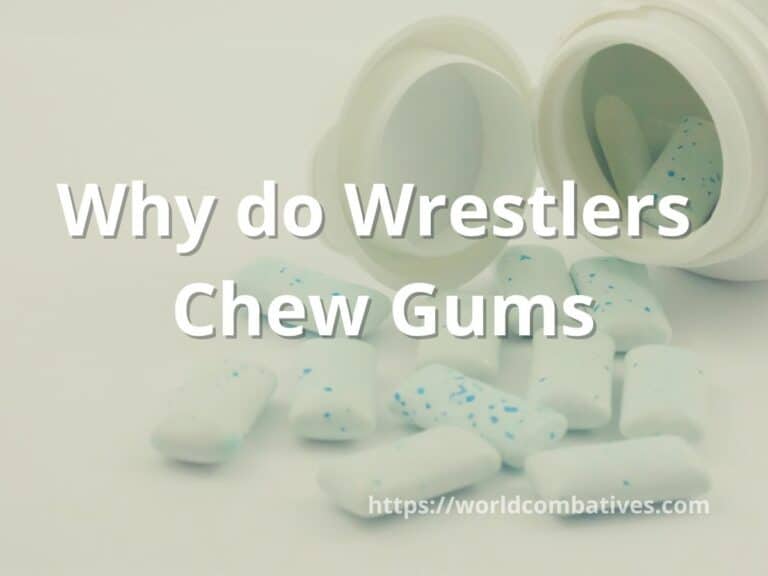Do Wrestling Chops Hurt? | Types of Wrestling Chops and How to Avoid Injuries
Wrestlers in professional wrestling attack their opponents with various moves at their disposal. These techniques could include strikes, bumps, chops, throws, slams, aerial attacks, and even submission moves. A chop is when a wrestler uses the edge of their hand to strike their opponent’s backside, neck, shoulders, or chest. This movie is quite flashy when seen on TV. But do these chops hurt?
Wrestling chops can hurt a lot. After being chopped, the area could bruise for a few days and sting for about an hour. A large red handprint could also be left behind right away. Some people even bleed when their opponent chops them. However, the severity of pain depends on the type of Wrestling chop used.
The pain from wrestling chops depends on the type of chop done. But generally speaking, they hurt. Thus, I will discuss the basic wrestling chops here and how to reduce the damage caused by a chop.

What are the common Wrestling Chops?
1. The Backhand Chop – The Backhand Slice
A backhand chop is an act of a wrestler slicing his opponent’s chest with an upward backhand swing. It is also known as a knife edge chop or backhand slice.
Wrestlers frequently use this attack as it is a very flashy move that entices wrestling fans.
For example, when they see this movie, the crowd frequently yells, “Woooo!”.
A backhand chop may appear uncomplicated, but depending on the wrestler, it can be hard to master. Complete mastery of this move can make it especially painful for their opponent.
In fact, these chops have the potential to leave an opponent’s chest bleeding if delivered hard enough.
2. The Stiff Knife Edge Chop
In this variation of the backhand chop, the wrestler spins 180 or 360 degrees before delivering a backhand chop to the opponent’s chest.
The velocity and angle are such that the strike typically knocks back the opponent in an agonized lurch.
Here is what a stiff knife-edge chop looks like:
3. The Cross Chop
In a double variation of the backhand chop, the wrestler presses forward while lunging or jumping forward and crossing his arms in the shape of an “X,” striking the opponent’s neck on both sides.
The cross chop is more painful than the backhand chop because it is two of those back-to-backs.
It has more bruising area than any of the other chops.
4. The Kesagiri Chop
The Kesagiri chop is done with a downward diagonal motion that targets the side of the target’s neck or shoulder.
It is based on a legitimate defensive cut used in traditional Japanese swordsmanship, and the Japanese words kesa and Giri, respectively, translate as “monk’s sash” and “cut.”
Here is what a Kesagiri chop looks like.
5. The Overhead Chop – The Tomahawk Chop
In the overhead chop, the wrestler pulls back his hand and strikes the opponent vertically, usually to the top of the head.
This move is frequently used by two extremely tall, strong wrestlers like The Great Khali and Andre the Giant.
This maneuver is also referred to as the “Tomahawk Chop” because it is carried out in a manner that is similar to how a tomahawk is thrown.
Here is what an Overhead chop looks like:
6. The Mongolian Chop
In the Mongolian chop, wrestlers carry out a simultaneous downward swinging chop to both the opponent’s shoulders or sides of the neck.
So basically, it is the backhand slice done four times. Ouch! That is bound to leave some dark bruises.
Here is what a Mongolian Chop looks like:
7. The Throat Thrust
In the throat thrust – sword chop, the wrestler uses the tips of all five stiffened fingers of a supine hand to strike the opponent’s throat upward, similar to a traditional wrestling uppercut.
It was a signature move used by professional wrestlers like Abdullah the Butcher and Sgt. Slaughter.
Here is what Throat Trust Chop looks like:
8. The Thumb to The Throat Chop
The Thumb to The Throat Chop is a special chop derived from the thumb in which the wrestler pulls back a hand and strikes the opponent’s windpipe with just the thumb, sometimes while holding the opponent by the nape.
This move was performed by wrestlers such as Umaga and Ernie Ladd.
Here is what a Thumb to The Throat Chop looks like:
As you can see, many of these moves are pretty painful. However, there are ways to reduce the injuries chops may cause, which we’ll discuss in the next section.
How To Defend Yourself From Harsh Wrestling Chops
To make sure you get the least bruising and minimal pain while receiving a chop, follow these tips. Here are some ways to avoid the largest impact of a chop.
1. Brace For Impact
You might fall hard after receiving a harsh chop.
To avoid hitting their heads, wrestlers will brace themselves for impact, for example, by falling in a specific way or by using their hands and knees to absorb a blow.
You can see the receiving wrestler hugging the attacking wrestler tightly as a precaution in some potentially dangerous moves.
2. Don’t Be a Sandbag
When falling, do not simply slouch there like a sandbag.
As the target of the chop, try to keep your legs as upright as you can and make the hit easier by shifting your weight and keeping your body loose.
This way, you’ll get a minimal blow with the least amount of pain.
3. Fake Your Fear
It might be crucial also to appear to be struggling, depending on the story being told.
Put a fearful expression on your face and wave your free arm in the air.
It will appear like you are in greater agony than you really are, which might make your striker strike you with a softer chop.
Scream and shout as if you are experiencing pain and having your head severed from your shoulders. The move would not look good if you were to lay there.
This might look like acting but remember that most Pro-wrestling matches are purely staged, so I have to include it here.
Recommended Read: Do you know how much WWE scripts their match? Do the referee or wrestlers know who the winner is before a match? I discussed that topic here: How Scripted is Pro-Wrestling?
4. Move Toward the Ropes
Gaining control of one of the ring ropes will give you stability and added elasticity to take the chop well.
Get up on your elbows and begin crawling, dragging your opponent behind you if you are in the center of the ring until you get to the sides. Then take the blow there.
My tip to you would always be to take the blow graciously. What do I mean by that?
Well, it just means you can’t avoid the inevitable – once your opponent has decided to give you a chop, you are bound to get it.
It’s best to make the most of it by keeping your body relaxed and prepared. Do not go rigid, as it will make you take the chop harder than intended.
With these, you have the basic knowledge of wrestling chops and some tips on reducing its impact.
What’s Next? Have you ever wondered if those wrestling bumps hurt? I created a post discussing them here: Do Wrestling Bumps Hurt?







